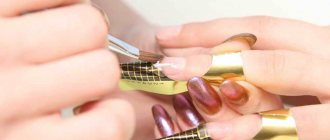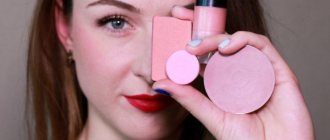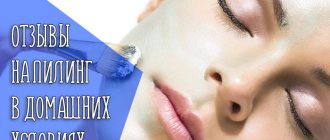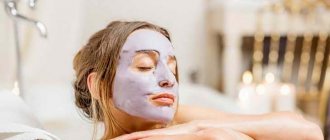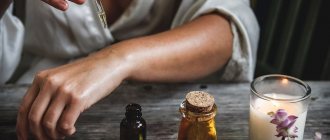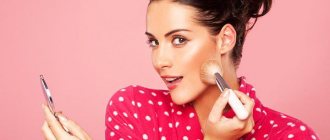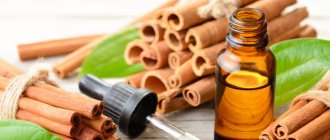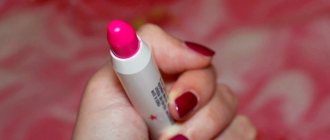What are red cheeks
A slight blush has always been considered a sign of health or a characteristic of modest people. From a physiological point of view, the cause of red cheeks is a rush of blood to this part of the face. The skin contains a large number of capillaries that provide thermoregulation processes. What causes the increase in body temperature, flushing of the face and redness is not always immediately clear. The reasons need to be looked for in order to adjust the treatment.
Which blush suits you
Round blush
on the apples of the cheeks is the most versatile way to apply blush. This blush makes the apples of the cheeks look voluminous, refreshes and rejuvenates the face, and makes the skin visually healthier.
Diagonal blush
also originates on the apples of the cheeks and shades towards the top of the ears. This blush gives both a refreshing and lifting effect, making facial features sharper.
Semi-circular blush to the temples
. Such a blush comes into fashion with a certain periodicity and belongs to the category of decorative, if only for the reason that the natural blush does not appear in a similar semicircle from the cheekbones to the space above the eyebrows. But this effect emphasizes eye makeup, especially smoky shadows, tightens the face and gives it character and brightness.
Light blush
. A “light” blush is achieved by shading in a downward direction. This blush has no boundaries, is applied very softly, and with the final movement is stretched towards the chin. “Light” gives the most noticeable anti-aging effect, but is only suitable for natural makeup.
Blush should be applied after the protection stage. When using powder, apply powder first, then blush.
Causes
There are many main reasons why cheeks are red. This:
- fluctuations in the emotional state (a person does not control these reactions, their manifestation is associated with the work of the autonomic nervous system, its sympathetic department);
- hormonal changes in the body (adolescence, menopause);
- taking medications (especially hormonal ones);
- alcohol consumption;
- in rare cases - liver or stomach diseases;
- allergic reactions;
- hypersensitivity and skin diseases.
Flushing, which externally manifests itself as red cheeks, causes stretching of the capillary walls and their thinning. As a result, blood stagnates in small blood vessels and produces harmful substances. Frequent redness of the cheeks leads to serious consequences - the development of rosacea. It is easy to identify it at home, but for treatment you need to see a doctor.
The child has
The baby's rosy cheeks delight parents and are perceived as an indicator of health; the pale skin of young children is more worrying. If your child’s cheeks suddenly turn red or this phenomenon occurs frequently, it may be associated with illness or the presence of a disease. Don’t worry right away if your child’s skin turns red due to certain factors:
- after playing in the cold, walking in the cool season (the blush lasts about half an hour after returning indoors);
- psychological reaction of the child (anger, shyness) - the redness will disappear when the child calms down;
- prolonged exposure to the sun;
- in children 1-2 years old, redness is observed after eating (especially in those who can eat on their own, the remains of some dishes cause irritation on the baby’s delicate skin).
There are reasons that should definitely alert attentive parents:
- red spots on the cheeks when the skin of the nose and the skin around the mouth turns red and burns when teething;
- redness of the entire face and chin - indicates dryness and high temperature in the room;
- red spots on a child’s cheeks, peeling, itching – appear due to diathesis and allergies;
- redness of a point nature, followed by the appearance of tubercles - may be an indicator of the presence of parasites in the child;
- red hot cheeks with pallor of the tip of the nose and lips, lethargy, poor appetite, cough, fever - sure signs of pneumonia;
- Red cheeks during night sleep are evidence of heart disease.
Oddly enough, most often a blush on the face appears as a result of vivid emotional experiences, both negative and positive. An awkward situation or stress often causes a person to start blushing and cannot do anything about it. However, such a reaction does not last long. But what to do when the blush on your face is constantly present?
Blush as a sign of health
Many international clinical studies confirm the fact that a slight blush on the cheeks indicates good health. Scientists start from the fact that the inner layers of our skin (dermis) are enriched with a large number of blood vessels that supply tissues with oxygen and nutrients, and also take away waste products of metabolism. For people in optimal psychological and physical condition, it is quite normal to periodically blush and have a slight flush on the face.
At the same time, the detection of excessive redness of the face of a local or widespread nature may indicate serious health problems.
Blush on the cheeks: reasons. What does blush mean? The body's secret signals about illness
Many international clinical studies confirm the fact that a slight blush on the cheeks indicates good health.
Scientists start from the fact that the inner layers of our skin (dermis) are enriched with a large number of blood vessels that supply tissues with oxygen and nutrients, and also take away waste products of metabolism.
At the same time, the detection of excessive redness of the face of a local or widespread nature may indicate serious health problems.
Folk recipes for redness on the cheeks
Redness after allergies, chapping or sunburn may not go away immediately. Folk remedies will help ease your skin condition.
If there is redness, you should not carry out procedures to cleanse and tighten the skin, or wash your face with soap. This thins and further irritates the skin, making it sensitive and depriving it of nutrition.
As a cleanser, you can use an infusion of green tea, a decoction of chamomile or calendula.
To tone the skin and speed up the circulatory system, every morning you need to wipe the skin with an ice cube and then apply a nourishing or moisturizing cream.
Nutrition and restoration of skin with vitamin deficiency can be provided by special vitamin creams. They are very expensive in salons and pharmacies, but you can make such a cream yourself. To do this, you will need a simple moisturizer to which an oil solution of vitamin E is added (you can buy it at any pharmacy).
An infusion of birch buds will help speed up the disappearance of red spots. It will soothe and heal the skin. Lotions can be made several times a day by applying cotton pads soaked in the infusion to the stains.
Another popular remedy for red cheeks is garlic tincture. It helps with possible bacterial infections of the face. You need to take a half-liter jar and fill it three-quarters with finely chopped garlic.
The rest of the space is filled with alcohol, then the jar is tightly screwed on with a lid. You can use the product after infusing for 10 days in a dark place. People with sensitive skin and allergies should be careful with the tincture.
Masks based on sour cream and cottage cheese are suitable as an excellent nourishing and healing remedy for the face. They will help deal with blemishes and whiten the skin a little. As an addition to such masks, you can use olive oil and honey, infusions of herbs (parsley, chamomile) and egg white. For oily skin, you can use masks based on white clay with the addition of lemon juice.
A gentle blush has always been considered a sign of beauty. But if your cheeks often turn red and burn, then this is already a sign of problems in the body, which can be both physiological and psychological in nature.
However, people have developed their own interpretation of why cheeks are red and burning; there are a number of signs associated with this, which you can learn about on this site.
Signs do not appear just like that; they are usually the fruit of numerous observations that make it possible to connect one event or action with another and build a certain pattern.
So you shouldn’t look down on folk signs, especially since many of them are often justified.
But back to our question: why are your cheeks red and burning? By the way, in medicine this is referred to as blushing syndrome.
and has its own explanation.
Blush and sinusitis
As clinical practice shows, constantly red cheeks may indicate an inflammatory process in the paranasal sinuses, in particular in the maxillary sinus. But it should be noted that, in addition to this symptom, there must be a number of signs that indicate the development of sinusitis:
- Breathing through the nose is difficult, or may even be absent.
- If there is an acute course or an exacerbation of the chronic form, discharge from the nasal passages will be observed. The nature of the discharge is very different: from mucous or mucopurulent to purely purulent. Their greatest number is observed in the morning after waking up.
- The patient feels “pressure and heaviness” in the front of the face. Soreness may spread to the temple.
- Reduced olfactory function.
- Exacerbations are usually accompanied by a rise in temperature.
The exact reason why the blush persists on the cheeks can only be determined by a qualified and experienced medical specialist.
Seven rules for creating a natural blush
FORTUNATELY, THE DAYS ARE ALREADY GONE WHEN YOUNG LADIES, IN A SEEK TO GIVE THEIR FACES A “HEALTHY RUSH,” FURIOUSLY RUBBED THEIR CHEEKS WITH BEETS. IN OUR DAYS, THIS IMAGE OF A RUSSIAN BEAUTY IS PRESERVED ONLY IN SOUVENIR NESTING DOLLS. AND A REAL, NATURAL BLUSH, WHICH IS SO VALUED BY ALL WOMEN, IS PRACTICALLY NOT NOTICEABLE ON THE FACE, BUT VISUALLY MAKES THE SKIN FRESH, HEALTHY, GLOWING FROM THE INSIDE! HOW TO ACHIEVE THIS RESULT?
1. First you need to choose the right brush. It should be large and fluffy. The small brushes that come with compact blushes are only suitable for applying makeup to the skin, but a large brush will allow you to effectively blend the blush. It is very important to clean your blush brushes to avoid the accumulation of germs and dust that are transferred to the skin. Use non-soap cleansers to clean brushes.
2. To create a refined facial contour, pull your cheeks inward so that your cheekbones are defined. Take a little blush with the brush and tap off the excess by lightly tapping the brush on the back of your hand. Apply blush to the prominent part of your cheekbones. Blend thoroughly with light and smooth movements from the center to the temples so that the brightest color remains on the cheeks. Pay special attention to the “edges” of the blush: they should blend in with the natural color of the skin. The direction of movement of the brush should always tend upward, as if taking off.
3. Now we create a light glow effect. To do this, you need to go to the mirror and... smile widely so that the “apples” appear on your cheeks. Apply blush with a shimmering effect on them using strictly horizontal movements. Two important conditions must be observed: firstly, the shimmering blush should be a tone lighter than what you applied to the cheekbones, and secondly, they should be carefully shaded and localized directly on the “apples” (and not all over the face from nose to hairline).
4. Framing the face. Apply a little blush to the tip of the chin and nose, temples and forehead along the hairline. This will create the effect of a beautiful and correct “frame” of the face and refresh it. Moreover, you should observe moderation and not overdo it with blush, and also choose a delicate, non-dark color (peach, pinkish, beige).
5. Carefully examine your face in natural light and check for sharp transitions and bright spots from blush. If such an oversight is discovered, then use a clean large brush to blend everything again. Don't try to fix your makeup with your fingers or palms - you'll only make it worse.
6. Remember that the color of the blush should be in harmony with the shade of the lipstick. And if you use lip gloss, then blush with a shimmering effect should be used very carefully, or completely abandoned.
7. Areas you should NOT use blush on: a. The area around the eyes (including directly above the cheekbones). If blush gets into this “territory,” your face will appear tired and somewhat swollen. The area that is closer than two fingers from the nose. Otherwise, the face will appear too narrow and elongated. With. The area at the temples that is above the eyebrows. Blush is inappropriate here, since such a strange blush will make the face unnatural. And. The area is well below the cheekbones. Do you want to look 5-7 years older? Then you can ignore this rule!
ATTENTION! All recipes are provided for informational purposes only. Before use, consult your doctor!
Other causes of flushed cheeks
In addition to inflammation of the paranasal sinuses and tuberculosis in the organs of the respiratory system, blush on the cheeks can be observed with the following diseases or pathological conditions:
- Rosacea (rosacea).
- Allergic reaction.
- Cardiovascular diseases.
- Diabetes mellitus.
- Diseases of the adrenal glands.
- Systemic lupus erythematosus.
A persistent, unhealthy blush on the cheeks is a sign that always indicates some kind of disease.
Red cheeks: how to deal with excessive blushing
Since ancient times, a bright blush on the cheeks has been considered a sign of health. But not all representatives of the fair sex are happy with such decoration. What are the causes of excessive blushing and how to get rid of it?
It should be noted right away that red cheeks in teenagers are normal. After hormonal levels normalize, this trouble usually disappears.
Reasons for bright blush
Before you start fighting the problem with the help of cosmetics, you should find out the reasons for its occurrence.
Inflammation
Problematic skin with acne is characterized by persistent redness. In this case, you cannot do without the help of a specialist. He prescribes comprehensive treatment and selects optimal care.
Allergy to cold
Blushing from the cold is normal, but if it is too bright and does not go away for a long time, then this is a symptom of an allergy to the cold. Very often it accompanies a disease such as monocleosis.
Sensitive and thin skin
The most common cause of excess blush is blood vessels located close to the surface of the epidermis. Such sensitive skin requires special care.
How to quickly remove redness
Washing with chamomile infusion will help get rid of unhealthy blush. In the morning and evening, after the cleansing procedure, you need to rinse your face with a decoction. The skin should dry naturally. Or you can wipe your face with a cotton pad soaked in chamomile decoction throughout the day.
Homemade masks will help remove redness:
- Mix honey and ground cinnamon in equal proportions. Apply the resulting mixture to your face and leave for 20 minutes. Then rinse off with cool water.
- Grate the cucumber on a fine grater or chop in a blender. Keep the paste on your face for 10 minutes, wash with warm water. As a bonus, the mask will smooth the skin and help get rid of acne.
You can effectively and quickly get rid of redness with aspirin. Mix crushed 3 tablets with a small amount of lotion. It would be good if it was hypoallergenic. Keep the resulting composition on your face for 15 minutes, then rinse with water.
Rules for caring for sensitive skin
To prevent the appearance of a bright blush, you need to follow some rules in skin care:
- when choosing cosmetics, avoid irritating components (lye, essential oils),
- do not wash your face with hot water (it dilates blood vessels, thereby causing redness),
- use creams that contain ingredients that relieve irritation (allantoin, panthenol, niacinamide) and components that strengthen the vascular wall (vitamins C, horse chestnut extract).
The problem of red cheeks can be solved with proper skin care, using special masks and washing with herbal decoctions.
Provoking factors
Quite a few factors can lead to local redness on the face. Let's list the most common ones:
- Stressful situations that provoke a surge of strong emotions.
- Sudden change in temperature.
- Smoking and alcohol abuse.
- Prolonged exposure to the sun or visiting a solarium.
- Poor quality cosmetics.
- Use of aggressive skin care products.
In children, blush on the cheeks is often a manifestation of diathesis.
How to treat?
Independent attempts to get rid of an unhealthy blush on the face often do not bring success. Nevertheless, in the first stages, especially if you know the probable cause of the skin reaction (for example, prolonged exposure to the sun or freezing), you can try protective medications in the form of creams, ointments, lotions, etc.
The most advisable thing is to visit a dermatologist to exclude or confirm skin pathology. If a skin disease is detected, a qualified specialist will prescribe appropriate treatment for you. If you do not have skin problems, but the unhealthy blush on your face does not go away, we recommend that you consult a therapist for a full medical examination. We strongly advise against using any traditional medicine recipes.
Self-treatment, as a rule, does not lead to anything good. Entrust your health to professionals who have sufficient experience and qualifications in their field of activity.
A ruddy complexion has long been considered an indicator of good health. But is it only the blush on the cheeks that can signal this? Why does he appear?
How to properly apply blush on your face?
So how to apply blush so that you look not like a painted doll, but like a fresh and youthful girl with a beautiful skin tone?
It is very important not to abuse this remedy. To give your face freshness, it is enough to apply a very thin layer of blush and shade it very carefully so that the color border is not visible.
Excess dry blush can be easily removed with a brush, and if you accidentally overdo it with liquid or creamy blush, you will have to wash off your makeup and reapply foundation and blush.
